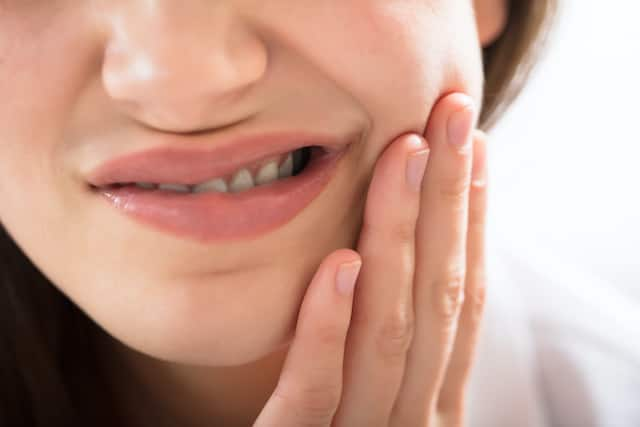Enamel decays in stages when a cavity begins to form, so taking early action can prevent it from progressing. A hard and mineralised coating, tooth enamel protects your pulp and dentin – the soft inner layers of the tooth. And when acids from common mouth bacteria attack the enamel, it changes colour. This is the first sign of enamel decay.

Enamel Decay: How It Starts And How To Stop It
Tooth Enamel
Tooth enamel is the hardest substance in your body. It is a crystal-like material, made mostly of a mineral called hydroxyapatite, that also contains smaller amounts of similar minerals. The natural colour of enamel ranges from light yellow to greyish white; because it is semi-translucent, the colour of the tooth's inner area contributes to its overall appearance.
Tooth enamel does not contain living cells, so you don't feel the first effects of its decay. The enamel slowly breaks down under acid erosion, and when it is wears away completely, it does not grow back.
Mouth Bacteria
"Streptococcus mutans" is the bacterium responsible for enamel decay, and it lives in the mouth from the time your baby teeth erupt. A research study published in the IOSR Journal of Dental and Medical Sciences notes that Streptococci mutans metabolise the dietary sucrose and release an acidic by-product that results in demineralisation of the tooth. When plaque sticks to tooth enamel, other mouth bacteria inhabit it. Together with Streptococcus mutans, the bacteria convert sugars in food to lactic acid, which demineralizes the enamel.
Stages of Tooth Enamel Decay
In its early stages, enamel decay is reversible. Cavities form very soon, however, and only a dentist can treat the damage. When lactic acid breaks down the minerals in your enamel, it turns white – but unfortunately not the white you want. The first sign of decay is actually a white patch on the tooth, and at this stage, improving your oral health habits and treatments is vital to prevent the decay from progressing.
The Indian Dental Association explains that demineralisation is the earliest stage of tooth decay. It's called demineralisation because, during this part of the process, the tooth enamel loses the minerals that make up its structure. Sometimes you can see demineralisation as small white or brown spots on the teeth. Next stage is Cavity Formation which is an irreversible infection usually bacterial in origin that causes demineralisation of the hard tissues (enamel, dentin and cementum) and destruction of the organic matter of the tooth. Thereafter at next stage is Pulpitis where tooth decay reaches the pulp (nerve) of the tooth gets inflamed when exposed to bacteria and irritating food particles. Finally the enamel wears off, allowing the acids to enter the soft inner part of the tooth and develop a cavity. Without treatment, this cavity grows larger and the tooth can become painful.
Preventing Enamel Decay
Tooth enamel cannot regrow, but it can remineralise at its remaining points with the help of fluoride. According to UC Santa Barbara, repeatedly coating tooth enamel with low concentrations of fluoride enables it to quickly grow new and larger enamel crystals.
Brushing twice a day with a fluoride toothpaste provides regular exposure to fluoride and, along with once-a-day flossing, helps keep the teeth free of plaque and other harmful acids. Using a fluoridated mouthwash also can prevent existing decay from progressing. Your dentist can provide similar fluoride treatments to further protect the teeth and remineralise any weakened enamel.
Tooth enamel is a tough substance, but it still needs your protection. Good oral care can ward off acid attack, but you should also check your teeth regularly for white or brown areas that signal the start of decay. Your dentist is looking for these and other warning signs at every check-up to help you keep your tooth enamel in top condition.
This article is intended to promote understanding of and knowledge about general oral health topics. It is not intended to be a substitute for professional advice, diagnosis or treatment. Always seek the advice of your dentist or other qualified healthcare provider with any questions you may have regarding a medical condition or treatment.





